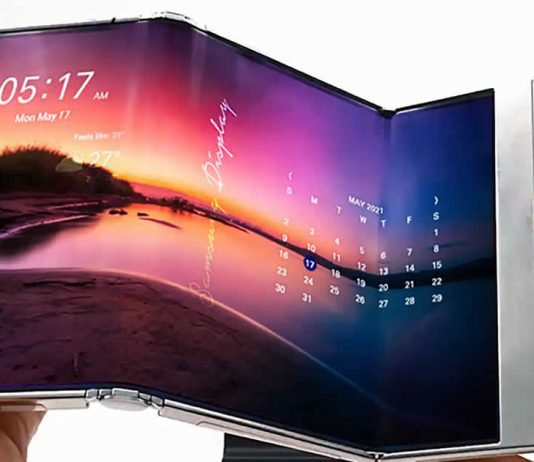Samsung has shown what it is working on, prototypes of folding and roll-up screens that we will see on mobile phones, computers, and more devices.
At Display Week 2021, organized by the Society for Information Display Screens (SID), the Korean company has shown what its next steps will be, letting us see mobiles that fold three times, cameras that are hidden under the screen, and pull-out OLED screens.
One of the most striking prototypes displayed at the event is a device with an S-Foldable screen that folds into three parts. Unlike other prototypes that we have seen from other manufacturers, the key is that this model has a hinge system that allows it to be folded into several parts.
The name of the screen is derived from the multiple bends in the letter “S”. One part of the screen is folded inwards, and the other is folded outwards. When fully opened, the S-Foldable has a diagonal of 7.2 inches.
Brands like TCL have already shown the world their ideas for a phone with an extendable screen. In the image shared by Samsung Display, we see that Samsung takes advantage of the interface to get its extendable screen to collect a feed of applications on one side. Although, of course, this ‘extra’ screen could be used for many other things, such as displaying notifications.
This other prototype, reminiscent of Microsoft’s latest folding smartphone, is much less innovative but very interesting. A hybrid between laptop and folding tablet that, in addition to running Android applications, would have a full 17-inch panel and extremely thin edges.
The OLED screen can be folded vertically in the middle, which Samsung describes as “Carrying Small, Seeing Big.” A prototype shown by Samsung shows how Microsoft PowerPoint is executed on the left half of the screen and Word on the right half.
The last prototype is the most interesting, and above all, it is the best candidate to be produced. Samsung already confirmed this year that it was working on the technology that would allow the camera to be hidden under an OLED panel. We saw it on a laptop known as the Samsung Blade Bezel, and this device follows that same idea.
“Under Panel Camera” — as the name suggests, the front camera of this OLED panel is no longer built into a notch or punch hole — unlike what is common today — but behind the screen.
Samsung is by no means the first company to do research on this technology. According to rumors, future Samsung smartphones could be equipped with this type of panel.


